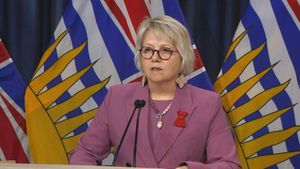The tension is mounting for NASA as they grapple with the safe return of astronauts Suni Williams and Butch Wilmore from the International Space Station (ISS). The duo has been stranded since early June, facing challenges tied to the technical difficulties of Boeing's Starliner spacecraft.
Nasa has several options to rescue these astronauts, exploring the feasibility of utilizing SpaceX's Crew Dragon. But there's one significant hitch: the astronauts' Boeing spacesuits aren't compatible with SpaceX's systems, making any transition problematic.
The situation highlights the broader compatibility issues between the two major players, Boeing and SpaceX, both of which developed their unique spacesuit designs. NASA's Commercial Crew program allowed these private companies considerable freedom, unintentionally leading to this crisis.
The choice to adopt divergent designs stemmed from NASA's goal to encourage innovation within the private sector. While this flexibility promoted creativity, it obscured the necessity for cross-compatibility, which has now become painfully evident.
Currently, NASA is weighing different prospects to bring Williams and Wilmore home safely. One of the options on the table involves using the Crew Dragon, which requires astronauts to fly back without their suits - a risky gamble.
The complications don't stop there. With the Crew Dragon originally accommodating up to seven crew members, its current setup limits occupancy to four, exacerbated by the incompatibility of spacesuits.
To tackle this predicament, NASA is considering adjusting the upcoming Crew-9 mission. By launching with two fewer crew members and sending along spare SpaceX suits, they'll create room for the stranded astronauts’ return.
While these contingency plans are being formed, the financial stakes for Boeing with the Starliner program are rising. Given the billions invested, any failure to facilitate the astronauts' return would reflect negatively on both Boeing and NASA.
Beyond finances, these spacesuit compatibility issues raise substantial safety questions. I'm sure many are wondering: how can two competing companies develop systems so incompatible?
At the heart of this crisis is the realization of how the lack of foresight can lead to unforeseen consequences. For space enthusiasts, this situation serves as sobering evidence of the inherent risks involved with innovation and competition.
The dilemma poses not only technical challenges but also calls attention to the trust placed on commercial partners by NASA. Future missions will likely be influenced by the lessons learned from this precarious situation.
Nasa’s dedication to ensuring the astronauts’ safety remains unwavering. Each decision taken now may shape operational strategies as they prepare for more commercial spaceflights.
The question of how to resolve the spacesuit incompatibility remains at the forefront of this rescue mission. NASA must balance urgency with caution as they navigate this tricky terrain.
With the world watching intently, the resolution of this crisis will likely redefine future collaborative efforts between NASA and the private sector.
Going forward, the importance of coordinating design standards across commercial partnerships cannot be overstated. The stakes are incredibly high, not just for the astronauts but also for the credibility of space exploration efforts organized by commercial partners.
For now, NASA continues to assess these options, hoping to return the astronauts safely by February. The agency’s decision-making on this matter will undoubtedly impact how space campaigns proceed.



